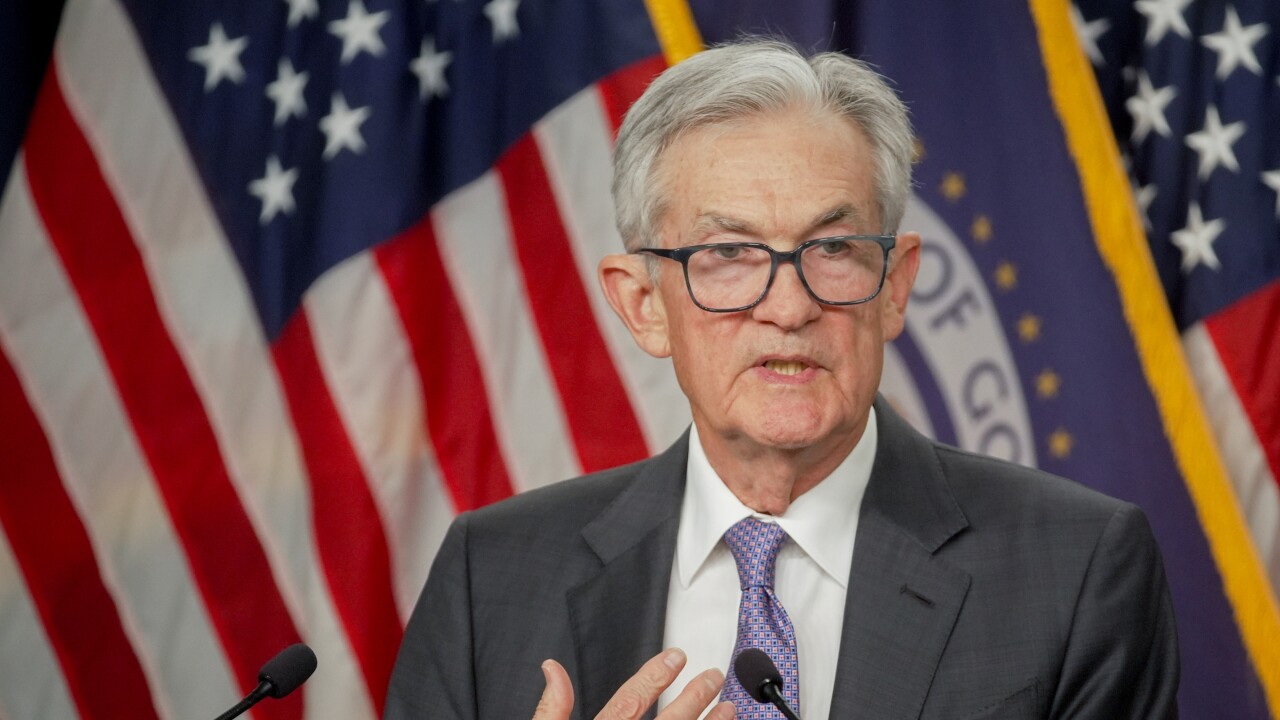
UPDATE: This article includes a quote from Treasury Sec. Scott Bessent.
Inflation rose modestly last month, signaling that the U.S. economy might be feeling the effects of elevated tariffs.
The Consumer Price Index increased 0.1% in May, bringing the year-over-year inflation rate to 2.4%. The monthly increase was less than the 0.2% tracked in April, but the annualized rate moved up from last month's 2.3% reading.
Much of the growth in the most recent inflation report came from the shelter category, reversing a monthslong downward trend in housing services costs. Food prices, from both grocery stores and restaurants, also jumped up in May, rising 0.3% on the month.
Core CPI, which factors out food and energy prices, rose 0.1% for an annualized rate of 2.8%.
The readings, released by the Bureau of Labor Statistics on Wednesday morning, appear to show few inklings of the tariff-induced price increases that policymakers — both at the Federal Reserve and elsewhere — have been warning about for months.
Treasury Sec. Scott Bessent, in testimony to the House Ways and Means Committee on Wednesday, said the reading shows that progress on slowing inflation remains on track.
"Inflation in the U.S. is at its slowest pace since 2021 on decelerating cost increases for shelter, food and energy," Bessent said. "After four years of price increases diminishing the U.S. standard of living, inflation is showing substantial improvement due to the administration's policies."
In
Just how the Fed might respond to an uptick remains to be seen and would depend on several factors including how high inflation rises, how quickly it gets there, how long it persists and whether it has any knock-on effects for the rest of the economy.
Waller predicted tariffs would cause overall inflation to rise to somewhere between 3% and 5% during the next year or so before gradually trending back down toward the Fed's 2% target with a minimal uptick in unemployment. He forecasted a peak unemployment rate of about 5%, up from the current rate of 4.2%.
Should this play out, Waller said he would support "looking through any tariff effects on near-term inflation when setting the policy rate" and could even see a "good news rate cut" — meaning one done because inflation is again on a sustainable downward path — later this year.
But even Waller, who has been the most optimistic about the economic prospects of an elevated tariff regime, has said the Fed cannot adjust monetary policy until it has a clear view of where trade policy will settle. This puts interest rates on an effective pause at least until after the July 4 deadline for other countries to negotiate reciprocal tariffs with the U.S.
Other Fed officials have expressed greater concern about higher imports having a more lasting impact on prices, pointing to potential supply chain disruptions or opportunistic price hikes as potential ripple effects.
"The recent post-pandemic experience with high inflation could make firms more willing to raise prices and consumers more likely to expect high inflation to persist," Fed Gov. Lisa Cook said in
Many Fed officials have turned to readings of inflation expectations to get an early read on where prices might be heading and how confident the public is in the central bank's ability to keep price growth anchored.
Waller has pointed to market-based readings — including hedging activity — as evidence that price expectations remain anchored over the medium and long terms. Fed
"Among data on inflation expectations, the most dramatic increases have been seen in the University of Michigan Surveys of Consumers," Kugler said, noting that the average expected inflation rate during the next five to 10 years is 4.2%. She added that, despite some critiques of the survey's findings and methodologies, it remains a "longstanding and important barometer of consumer sentiment, and I still monitor the signals it is giving us closely."
The Fed's monetary policy arm, the Federal Open Market Committee, will meet next Tuesday and Wednesday to determine whether to change its interest rate benchmark or keep it at the current range of 4.25% to 4.5%. President Donald Trump has been






